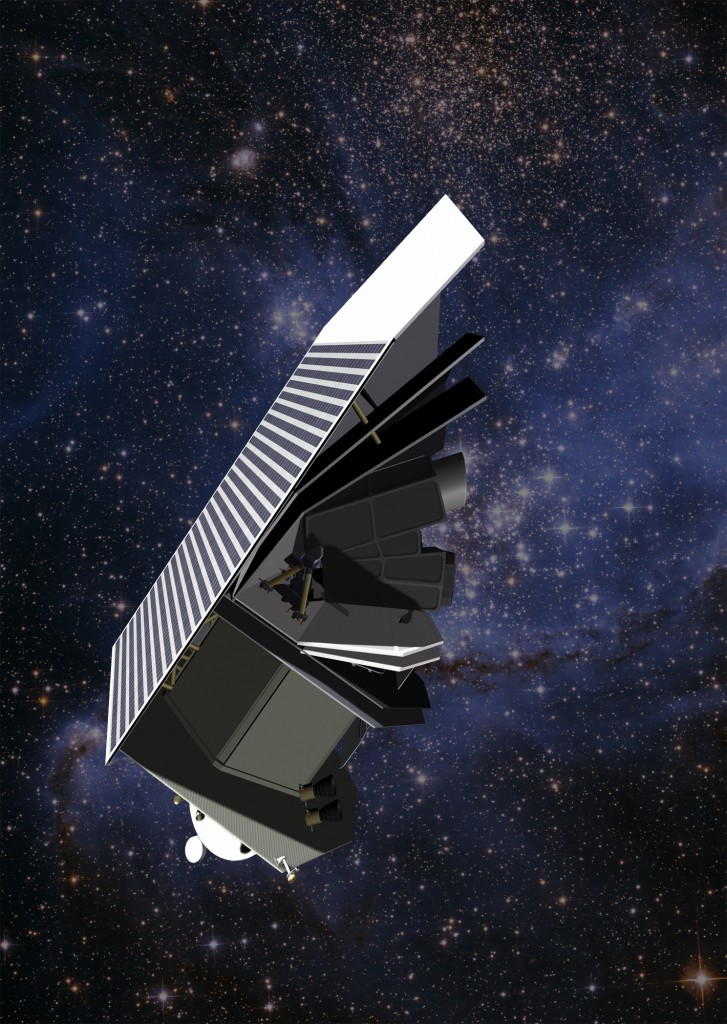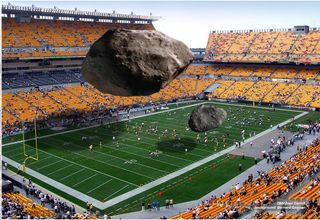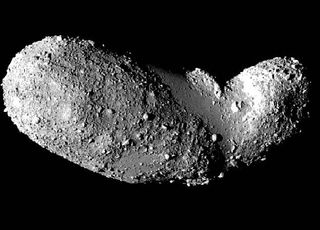Non-Profit's Private Space Telescope to Hunt Dangerous Asteroids in 2017

With the dangers of rogue asteroids made clear by the surprise explosion of a meteor over Russia in February, a non-profit organization is ramping up its effort to search for potentially hazardous space rocks near Earth.
The B612 Foundation was started in 2002 by former NASA astronauts Ed Lu and Rusty Schweickart with colleagues. The organization aims to launch a space telescope called Sentinel in 2017 to catalog near-Earth asteroids, including those that may pose a danger to Earth.
To date, about 90 percent of near-Earth asteroids large enough to destroy the entire planet (about 1 kilometer, or 0.6 miles wide) have been discovered, but far fewer of the smaller, city-killing size (roughly 140 meters, or 460 feet, in diameter) have been found. [Photos: The Sentinel Space Telescope]
"We are essentially flying blind in a cosmic shooting gallery," Scott Hubbard, B612 program architect, told reporters on Tuesday (April 9) at the 29th annual National Space Symposium in Colorado Springs, Colo.
This reality was starkly illustrated on Feb. 15, when a 55-foot-wide (17 meters) meteor exploded over Chelyabinsk, Russia, just hours before an asteroid almost three times its size called 2012 DA14 flew uncomfortably close to Earth.
Sentinel's goal is to detect about 90 percent of this city-killing class of asteroids over a period of 6.5 years.
The $450 million mission is to be privately funded, though the foundation has partnered with NASA to share its data and use the agency's Deep Space Network of satellites to facilitate communications between Sentinel and the ground. NASA and lawmakers have said they enthusiastically support the mission and the B612 Foundation's efforts.
Get the Space.com Newsletter
Breaking space news, the latest updates on rocket launches, skywatching events and more!
"We must better recognize what the private sector can do to aid our efforts to protect the world," Rep. Lamar Smith, R-Texas, chairman of the House Committee on Science, Space and Technology, said during a Congressional hearing on the asteroid issue Wednesday (April 10).

B612 is also looking to partner with other private organizations, such as the solar system exploration non-profit organization The Planetary Society.
"We are hoping in the future to partner with B612, and we will find the asteroid that could have our name on it," said Bill Nye, the CEO of The Planetary Society. "We will — this sounds extraordinary — we will save humankind. It sounds like science fiction, but it's real."
B612's presentation at the National Space Symposium came one day before the group's CEO, former astronaut Ed Lu, spoke before the House Science, Space, and Technology Committee Wednesday (April 10) on the importance of searching for potentially dangerous asteroids before they hit Earth.
Sentinel will fly in a Venus-like orbit around the sun, closer in than Earth. The observatory use an infrared telescope to search for space rocks as they near the sun, absorbing some of its light and re-radiating it as heat.
"If we build sophisticated night-vision goggles, we can see it," said John Troeltzsch, program manager for the Sentinel mission at Ball Aerospace, which has been contracted to build the spacecraft.

Ball was the primary contractor for NASA's infrared Spitzer Space Telescope, as well as the agency's planet-hunting Kepler spacecraft, which, like Sentinel, required a large camera and the ability to point precisely at a given spot in the sky.
"We have a lot of experience with very cold things observing very faint signals," Troeltzsch said. "If you take what we learned on Spitzer and what we learned on Kepler, you can derive Sentinel."
So far, B612 has raised about $2 million for the mission over the past eight months. It hopes to continue to raise $30 million to 40 million per year to keep the project on track.
Follow Clara Moskowitz on Twitterand Google+. Follow us @Spacedotcom, Facebookand Google+. Original article on SPACE.com.
Join our Space Forums to keep talking space on the latest missions, night sky and more! And if you have a news tip, correction or comment, let us know at: community@space.com.

Clara Moskowitz is a science and space writer who joined the Space.com team in 2008 and served as Assistant Managing Editor from 2011 to 2013. Clara has a bachelor's degree in astronomy and physics from Wesleyan University, and a graduate certificate in science writing from the University of California, Santa Cruz. She covers everything from astronomy to human spaceflight and once aced a NASTAR suborbital spaceflight training program for space missions. Clara is currently Associate Editor of Scientific American. To see her latest project is, follow Clara on Twitter.